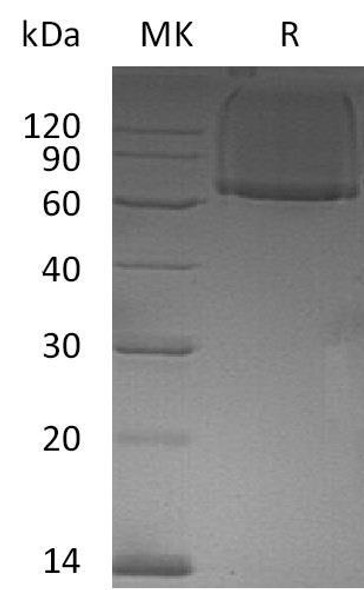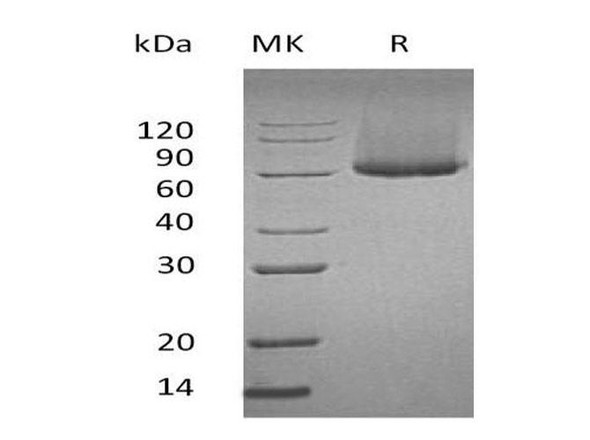Description
| Product Name: | Human Glypican-1/GPC1 Recombinant Protein (His tag) |
| Product Code: | RPES5978 |
| Size: | 20µg |
| Species: | Human |
| Expression Host: | HEK293 Cells |
| Synonyms: | Glypican-1, GPC1 |
| Mol Mass: | 55.66 kDa |
| AP Mol Mass: | 58 kDa |
| Tag: | C-His |
| Purity: | > 95 % as determined by reducing SDS-PAGE. |
| Endotoxin Level: | Please contact us for more information. |
| Bio Activity: | Testing in progress |
| Sequence: | Asp24-Ser530 |
| Accession: | P35052 |
| Storage: | Generally, lyophilized proteins are stable for up to 12 months when stored at -20 to -80°C. Reconstituted protein solution can be stored at 4-8°C for 2-7 days. Aliquots of reconstituted samples are stable at < -20°C for 3 months. |
| Shipping: | This product is provided as lyophilized powder which is shipped with ice packs. |
| Formulation: | Lyophilized from sterile PBS, pH 7.4. Normally 5 % - 8 % trehalose, mannitol and 0.01% Tween80 are added as protectants before lyophilization. Please refer to the specific buffer information in the printed manual. |
| Reconstitution: | Please refer to the printed manual for detailed information. |
| Background: | The Glypicans are a small multigene family of GPI-linked proteoglycans that play a key role in growth factor signaling. Human Glypican 1 (GPC1) is synthesized as a 558 amino acid (aa) preproprecursor that contains a 23 aa signal sequence, a 507 aa mature segment, and a 28 aa C-terminal prosegment. There are two potential N-linked and four potential O-linked sites for glycosylation or glycanation. There are potentially two heparan sulfate (HS) modifications on GPC1 that could contribute to a native molecular weight of approximately 200 kDa. Mature human GPC1 shares 91% aa identity with mature mouse GPC1. Cells known to express GPC1 include neurons, smooth and skeletal muscle cells, keratinocytes, osteoblasts, Schwann cells, immature dendritic cells, and tumor, plus tumorassociated vascular endothelial cells. The function of GPC1 is complex and varied. As a proteoglycan, it appears to make use of its HS adduct to impact select growth factor activity. This is accomplished by having juxtramembrane HS attachment sites, and a flexible, GPI-linkage. |






